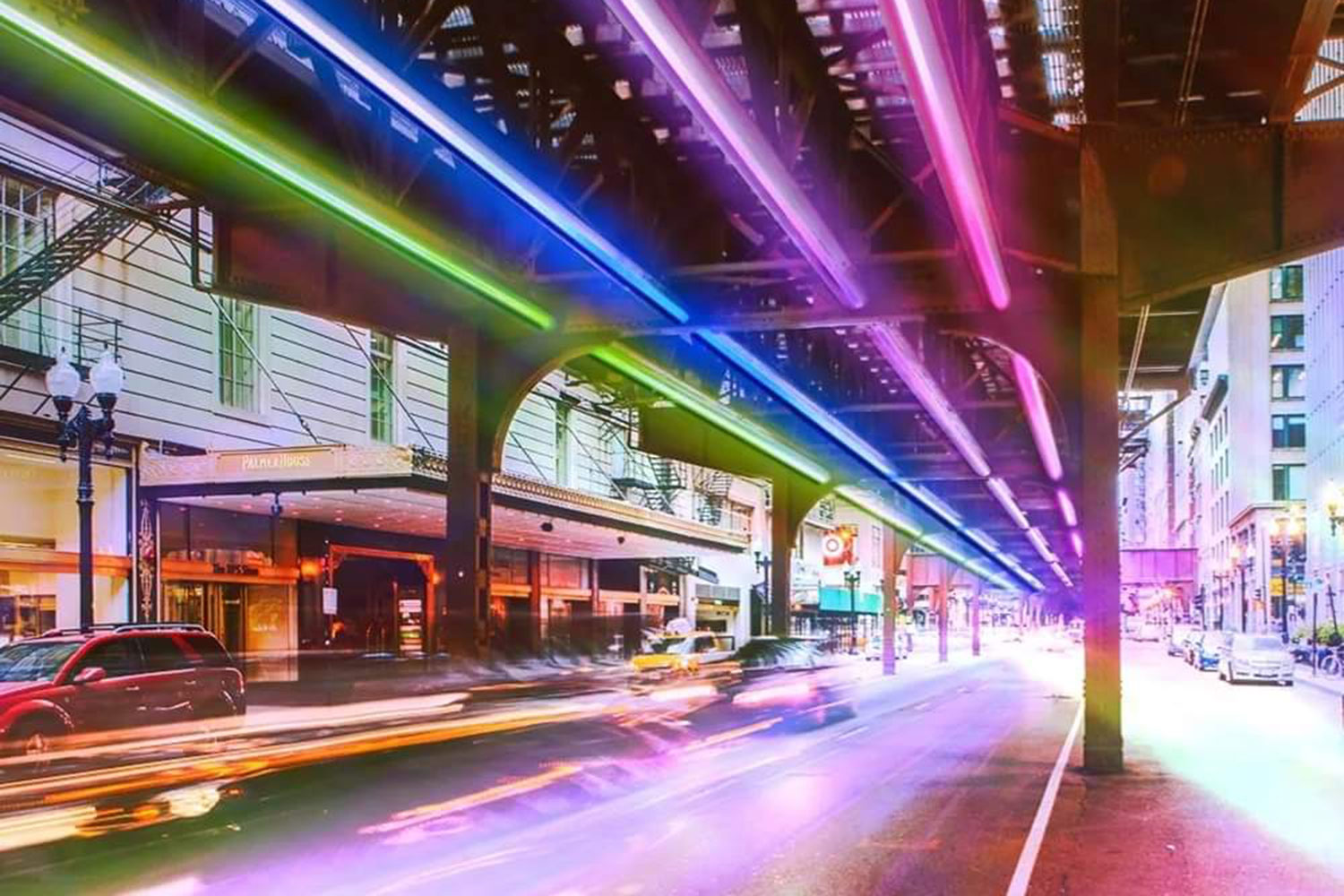If interactive public art is sliding down the Picasso in Daley Center or snapping funhouse- mirror selfies with the Bean, take note of a new project spearheaded by Lake View filmmaker Jack C. Newell. Ten years ago, he set out on a quest: “Could we make a piece of public art that’s actually made by the public?” His answer is finally at hand with the Wabash Lights. Today, Newell’s team will activate four parallel 50-foot stretches of custom-built colorful LEDs affixed beneath the L tracks along Wabash Avenue between Madison and Monroe — a lucent installation that lets anyone passing by play artist.
How It Works
Look for a QR code on a nearby light post or storefront window. Once you’ve scanned it, the prompts will let you choose a pattern and a speed to trigger a 15-second-or-so light show. (The exact timing is still being worked out.) “The lights are the canvas and you or me or my 7-year-old daughter become the artists,” says Vinod Havalad, a pediatric critical care physician at Advocate Children’s Hospital and board president of the nonprofit created to support the Wabash Lights.
What It Costs
Thanks to two Kickstarter campaigns, private donations, and additional funding from Comcast and Gertie (a local culture-minded civic group headed by Pritzker family member Abby Pucker), the team has enough money to complete the first phase — outfitting 50 feet of track for $150,000 — just ahead of the Democratic National Convention. Phase 2 involves finishing the entire Madison-to- Monroe stretch, for an additional $350,000, which they hope to do by December. “We will be pushing hard to fundraise to complete the full block,” Havalad notes.
How We Got Here (A.K.A. High-Voltage Hurdles)
Raising money wasn’t the only challenge. A tiny beta test with four 12-foot stringers of light went up in 2016, proving that the public would respond with enthusiasm. But organizers still had to alleviate the city’s safety concerns, so they agreed to keep the LEDs 30 feet away from any traffic light and to forgo hyperactive flashing, which can induce seizures. They also needed LEDs capable of withstanding year-round conditions: winter ice, summer heat, and constant tremors from the trains rumbling above. The team turned to San Francisco–based Looking Up Arts, which specializes in large-scale art installations (think Burning Man), to design and custom-build the materials — not just the LEDs themselves, but metal clamps, nylon bolts, and rubber vibration-suppression pads.
What’s Next
Havalad and Newell envision more elaborate opportunities for under-L auroras, such as having the LEDs accompany an ancillary Lollapalooza stage under the tracks. (“You basically plug the lights into their sound board, and it would become a visualizer,” Newell says.) They plan to collaborate with the School of the Art Institute of Chicago on other ideas. Their hope is that the installation will be a draw for a downtown that still hasn’t recovered fully from the pandemic. Says Newell: “Chicago needs a shot in the arm, and we think the Wabash Lights could help.”



